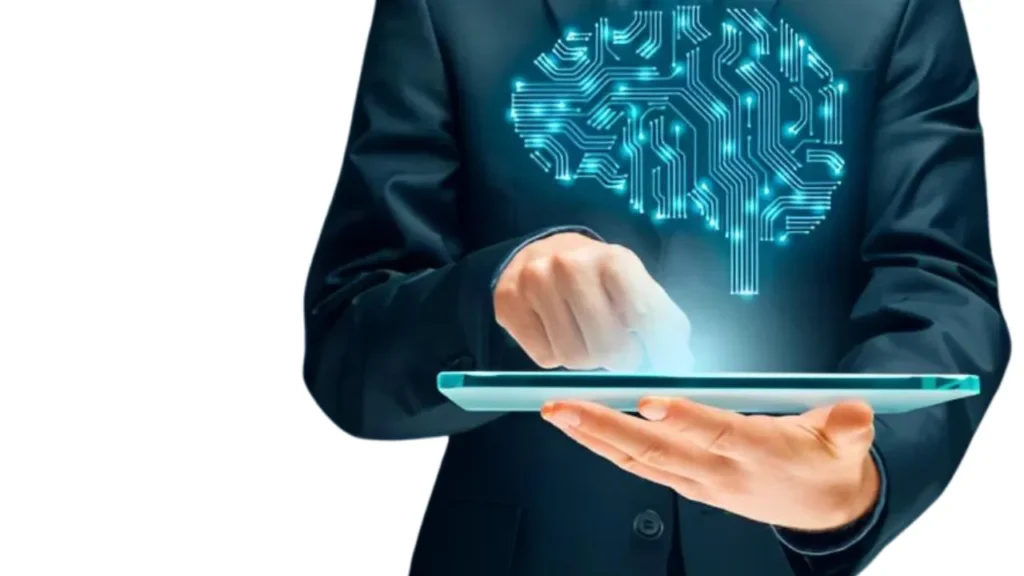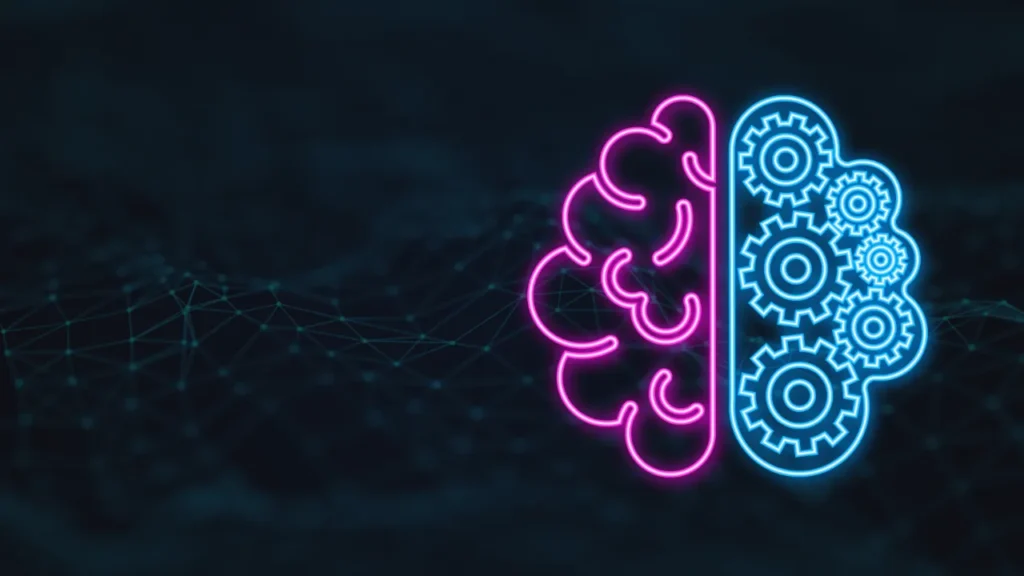We are on the cusp of a shift in an era where artificial intelligence and human intelligence are merging. Human-AI cooperation has grown from a theoretical notion to a potent fact that is transforming sectors, enhancing human potential, and advancing human beings.
To begin with, let’s establish the difference between augmented intelligence vs AI.
To avoid AI detection, use Undetectable AI. It can do it in a single click.
Augmented Intelligence Vs AI

In the fields of technological advances and computer science, artificial intelligence and augmented intelligence are similar but different ideas.
AI

Artificial Intelligence is the creation of software or computer systems that is capable of carrying out tasks that require human intelligence. Problem-solving, experience-based learning, comprehending natural language, identifying patterns, and decisions are some of these tasks. In general, AI systems fall into two categories:
Weak or Narrow AI
These AI systems do not have broad intelligence; instead, they are intended for specific duties. They are proficient at one skill or a restricted amount of things. Chatbots and voice assistants such as Siri are two examples.
Strong or General AI
Similar to human intellect, general artificial intelligence (AI) systems are depicted in science fiction as having the abilities to comprehend, acquire, and use knowledge to a wide range of tasks.
Augmented Intelligence

Rather than replacing people, augmented AI, referred to as intelligence augmentation, describes the application of AI technologies to improve human intelligence and decisions.
The basic idea behind augmented intelligence is to improve results across a range of fields by fusing human skill and judgment with AI’s strengths, such as data analysis and pattern identification.
Systems with augmented intelligence are meant to operate alongside people, offering advice, tools, and insights to help them adopt educated choices. Large volumes of data may be analyzed by these systems, which can spot trends and demonstrate information in a format that is straightforward for humans to understand.
Characteristics of Augmented Intelligence
The term augmented intelligence describes the idea of using artificial intelligence and machine learning technology to improve human intelligence and decision abilities. Augmented intelligence tries to enhance and supplement human talents, in contrast to artificial intelligence, which tries to replace human intelligence.
- Together with humans, augmented intelligence systems perform jobs that call for data processing, pattern identification, and decisions. Instead than replacing people, these systems are meant to strengthen them.
- With the use of AI algorithms, augmented intelligence is able to examine large amounts of data. This can be helpful in industries where data-driven insights are fundamental, such as marketing, finance, and healthcare.
- Systems with augmented intelligence offer advice and insights to assist people in reaching wiser decisions. For instance, by evaluating patient data and providing treatment suggestions, augmented intelligence in healthcare might help medical professionals diagnose illnesses.
- Augmented intelligence can automate monotonous and repetitive jobs, freeing up human workers to concentrate on complicated and creative aspects of their work.
- With the help of human users’ input and the data they evaluate, augmented intelligence systems can get better over time. They are able to improve their precision and effectiveness as a result of this.
- To assure that augmented intelligence systems are in line with society norms and human values, ethical factors including obligation, candor, and justice should be taken into account during the design process.
- Prioritizing user demands and preferences is fundamental for augmented intelligence systems, which should aim to improve users’ entire experience and improve their capabilities.
Augmented Intelligence Applications
Augmented intelligence is a cooperative method of applying AI to maximize human potential and help people reach better and informed decisions in a range of fields.
- Chatbots and virtual assistants that offer tailored advice and assistance.
- Business uses predictive analytics technologies to anticipate trends and enhance decisions.
- Systems that support medical practitioners with diagnosis and treatment suggestions.
- Financial instruments that help traders determine investment decisions by analyzing market data.
- Systems for natural language processing that support the creation and analysis of content.
AI and Human Collaboration

Collaboration between AI systems and humans to accomplish particular activities or goals is referred to as human-AI partnership and interaction. This kind of collaboration can take numerous shapes, and it can improve choices, solutions, and performance. Here are some salient features and illustrations of human-AI cooperation:
Augmented Intelligence
Artificial intelligence technologies can enhance human capabilities by offering data, insights, and suggestions. AI, for instance, can assist medical personnel to arrive at informed decisions by analyzing medical data and suggesting possible diagnoses.
Effectiveness and Automation
AI is capable of taking care of monotonous and repetitive jobs, allowing up humans to concentrate on intricate and creative areas of their employment. AI-powered robots are capable of accurate and reliable task performance in industries such as manufacturing.
Data Analysis
AI is adept at processing and evaluating large volumes of data. AI in business enables data-driven choices by assisting analysts in spotting trends, patterns, and anomalies in data.
Natural Language Processing
AI with NLP capabilities can help with chatbots, customer support, and content production. The ability of these AI systems to comprehend and produce human language improves the effectiveness of interactions.
Collaborative Robotics
Cobots are designed to collaborate with people in manufacturing and other fields. They are designed to help with jobs such as assembly and material handling and to be safe.
Creative Collaboration
AI systems are capable of producing creative stuff such as music and art. For example, musicians and artists can cooperate with AI to develop new works or even use AI-generated content as inspiration for their own work.
Decision Support
AI can offer suggestions and analysis to support decisions. This is useful in finance, as AI can assist traders in choosing investments, and in logistics, as AI may enhance supply chain management.
Healthcare Assistance
AI can help medical personnel with patient record management, disease diagnosis, and patient outcome prediction. AI, for instance, is capable of detecting anomalies in medical pictures such as MRIs and X-rays.
Research and Development
By searching through enormous datasets, emulating trials, and generating ideas, AI can speed up scientific research.
Education
By customizing content to meet each student’s needs and offering support and guidance, AI-powered educational technologies can help students have tailored learning experiences.
AI and Human Collaboration Challenges

Collaboration between humans and artificial intelligence has the power to transform a number of industries and raise standard of living and performance for everyone. But as this partnership develops, it brings up significant moral and societal issues that need to be resolved.
- It is difficult to assure that AI systems do not reinforce prejudices and arrive at moral decisions.
- It is fundamental to provide simple to use AI system interfaces to promote cooperation.
- It is fundamental to safeguard private information while working with AI technologies.
- It is fundamental people have the abilities needed to collaborate with AI.
- It is needed to create and follow rules and guidelines for AI collaboration.
Augmented Intelligence Business Scope

The term augmented intelligence, sometimes abbreviated as AI augmentation, describes the application of artificial intelligence technologies to augment, not replace, human intelligence. This method enhances numerous corporate processes, including decisions and problem-solving, by combining the advantages of humans and robots.
As AI technologies develop and companies discover new applications for them to boost output, effectiveness, and decisions, the field of augmented intelligence is growing. In any commercial setting, augmented intelligence implementation requires careful consideration of ethical issues, data protection, and legal compliance.
Augmented intelligence has a broad corporate scope that includes numerous applications in a wide range of industries. The following are some domains in which augmented intelligence can contribute to a difference:
Customer Support
By offering chatbots or virtual assistants that can handle common consumer questions and support requests, augmented intelligence can improve customer care by freeing up human agents to concentrate on complicated problems. In order to tailor interactions and suggestions, it can analyze client data.
Sales and Marketing
By analyzing massive databases to find possible leads, forecast consumer behavior, enhance marketing efforts, and even help with pricing plans, artificial intelligence can support sales and marketing teams.
Healthcare
Augmented intelligence has applications in the healthcare sector that help doctors diagnose illnesses, interpret MRIs and X-rays, and manage patient data. Clinical research and medication development can use it.
Finance
Financial organizations can benefit from augmented intelligence in the areas of algorithmic trading, risk assessment, fraud detection, and investment portfolio management. It can reveal information on the financial habits and spending habits of its clients.
Supply Chain and Manufacturing
Through demand forecasting, inventory optimization, and lead time reduction, artificial intelligence may enhance manufacturing procedures, anticipate equipment malfunctions, and enhance supply chain management.
Human Resources
Through the screening of resumes, interviews, and the identification of possible applicants who meet job requirements, augmented intelligence can help with the recruitment process. It can support workforce analytics and employee retention.
Education
AI has the potential to improve education by automating administrative duties for teachers, personalizing learning experiences for students, and supplying data on engagement and performance.
Legal
Artificial intelligence (AI)-driven legal research tools can help attorneys detect pertinent case law, analyze contracts, and assess legal documents. Predicting case outcomes using past data can be aided by it.
Customer Insights
Deeper insights into the preferences, behavior, and sentiment of customers can be obtained by the analysis of consumer data from several sources by augmented intelligence. Marketing plans and product development can both benefit from this information.
Content Generation
AI can help with content creation by producing reports, articles, and even artistic and musical creations. In content-heavy industries such as journalism and publishing, this can be helpful.
Cybersecurity
With its ability to analyze network traffic patterns, find weaknesses, and detect attacks in real-time, augmented intelligence can improve cybersecurity.
Research and Development
AI can speed up invention in disciplines requiring a lot of research by automating data analysis, simulations, and hypothesis testing.
Augmented Intelligence Job Scope

AI and human intelligence are integrated to augment rather than replace human capabilities in augmented intelligence. This field, which focuses on using AI technologies to empower and work with humans in diverse disciplines, is sometimes considered as an extension of AI.
Professionals working in augmented intelligence have a wide range of job opportunities, which are changing as AI technologies develop and find use in various sectors of the economy. As businesses look at using AI’s benefits while maintaining its ethical and responsible use, there will be an increase in demand for these positions.
The range of work in Augmented Intelligence encompasses the following positions:
Compliance Officers and AI Ethicists
Professionals that are certain AI systems are developed and used responsibly and in accordance with legislation are in demand as the use of AI grows. This entails formulating rules and regulations in addition to verifying certain AI systems are free from prejudice and bias.
AI Product Managers
These experts are in charge of supervising the creation of services and products powered by AI. They serve as a liaison between technical teams and business stakeholders, confirming that AI solutions are in line with both user requirements and business goals.
AI UX/UI Designers
Designers with a focus on developing user interfaces and experiences for apps driven by AI. For them to design user-friendly and efficient interfaces, they should comprehend both the capabilities of AI and user behavior.
Data Scientists and Analysts
When creating and optimizing AI models, data scientists and analysts are fundamental team members. In addition to creating and refining machine learning models, their duties include gathering, sanitizing, and evaluating data.
Machine Learning Engineers
These experts concentrate on developing and implementing machine learning systems and models. They focus on the model creation, optimization, and implementation of AI’s technical components.
AI Researchers
The goal of AI researchers is to advance the state of AI algorithms and technology. They often contribute to the creation of novel AI techniques while working in academic or research settings.
AI Trainers and Educators
The need for engineers, data scientists, and business experts who can instruct and teach others in AI technologies is rising as AI becomes common.
AI Consultants
AI solution implementation is an area of expertise of consultants working with enterprises. They evaluate the needs of the business, provide AI tactics, and direct the implementation procedure.
AI Specialists in Specific Domains
AI experts with knowledge of particular sectors, such as manufacturing, banking, or healthcare, are in demand. They use AI techniques to address issues unique to the sector.
AI Integration Engineers
These experts are in charge of incorporating AI technologies into businesses’ current workflows and systems. They assure AI systems integrate with other IT systems.
AI Business Analysts
experts that assess how AI might affect business operations, spot areas for automation and effectiveness, and support companies with adopting wise AI investment decisions.
AI Security Experts
As AI is used often, specialists who can evaluate and improve AI system security are needed to guard against data breaches and cyberattacks.
Conclusion: Augmented Intelligence Vs AI
Their goals and methods are where AI and augmented AI diverge. While augmented intelligence tries to improve human capabilities by offering AI-powered tools and help, artificial intelligence aims to construct autonomous systems that can complete tasks without human intervention.
By using AI technology, augmented AI seeks to increase human effectiveness and efficiency in activities by recognizing the value of human expertise and judgment in decision processes.
FAQs: Augmented Intelligence Vs AI
What is the difference between Augmented Intelligence and Artificial Intelligence?
Augmented intelligence focuses on enhancing human intelligence rather than replacing it, while artificial intelligence aims to mimic human intelligence with technologies.
How do Augmented Intelligence systems differ from AI technologies?
Augmented intelligence systems are designed to enhance human capabilities and decisions, whereas AI technologies are focused on automating tasks and processes.
Is there a distinction between AI and Augmented Intelligence when it comes to the analysis of data?
Augmented intelligence emphasizes the collaboration between human intelligence and technology to analyze data, whereas AI tends to rely on machine learning algorithms.
Can you explain the difference between Artificial Intelligence and Augmented Intelligence in terms of handling vast amounts of data?
Augmented intelligence leverages human intervention to interpret and arrive at informed decisions based on vast amounts of data, whereas AI processes big data without direct human involvement.
When should one consider using Augmented Intelligence instead of AI for data analysis?
Augmented intelligence is preferred in situations where human intelligence is fundamental for interpreting complex data patterns and arrive at contextual decisions, compared to AI which operates autonomously.
What role does Augmented Intelligence play in enhancing human intelligence compared to replacing it?
Augmented intelligence augments and complements human intelligence rather than trying to replace it with AI systems.
Can you elaborate on how AI and Augmented Intelligence differ in terms of technology integration?
AI systems are standalone technologies that operate independently, whereas augmented intelligence integrates with human decision processes.
In what ways does deep learning play a part in both AI and Augmented Intelligence?
Deep learning is a subset of machine learning that is used in both AI and augmented intelligence systems to analyze complex data patterns.


